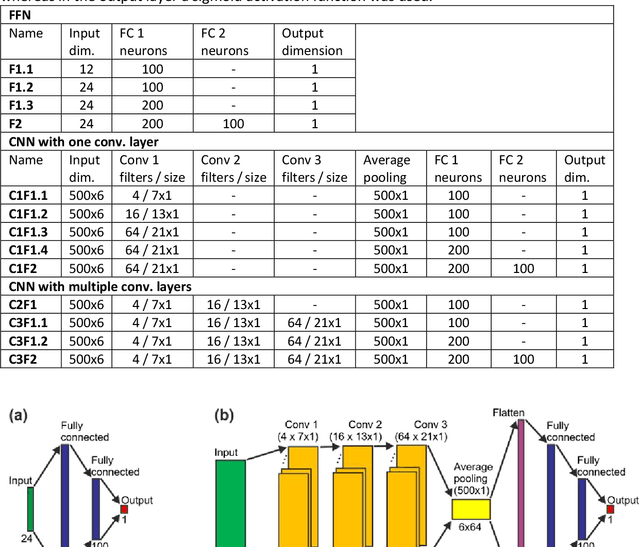Marc Kraft
Deep learning empowered sensor fusion to improve infant movement classification
Jun 14, 2024Abstract:There is a recent boom in the development of AI solutions to facilitate and enhance diagnostic procedures for established clinical tools. To assess the integrity of the developing nervous system, the Prechtl general movement assessment (GMA) is recognized for its clinical value in diagnosing neurological impairments in early infancy. GMA has been increasingly augmented through machine learning approaches intending to scale-up its application, circumvent costs in the training of human assessors and further standardize classification of spontaneous motor patterns. Available deep learning tools, all of which are based on single sensor modalities, are however still considerably inferior to that of well-trained human assessors. These approaches are hardly comparable as all models are designed, trained and evaluated on proprietary/silo-data sets. With this study we propose a sensor fusion approach for assessing fidgety movements (FMs) comparing three different sensor modalities (pressure, inertial, and visual sensors). Various combinations and two sensor fusion approaches (late and early fusion) for infant movement classification were tested to evaluate whether a multi-sensor system outperforms single modality assessments. The performance of the three-sensor fusion (classification accuracy of 94.5\%) was significantly higher than that of any single modality evaluated, suggesting the sensor fusion approach is a promising avenue for automated classification of infant motor patterns. The development of a robust sensor fusion system may significantly enhance AI-based early recognition of neurofunctions, ultimately facilitating automated early detection of neurodevelopmental conditions.
Infant movement classification through pressure distribution analysis -- added value for research and clinical implementation
Jul 26, 2022



Abstract:In recent years, numerous automated approaches complementing the human Prechtl's general movements assessment (GMA) were developed. Most approaches utilised RGB or RGB-D cameras to obtain motion data, while a few employed accelerometers or inertial measurement units. In this paper, within a prospective longitudinal infant cohort study applying a multimodal approach for movement tracking and analyses, we examined for the first time the performance of pressure sensors for classifying an infant general movements pattern, the fidgety movements. We developed an algorithm to encode movements with pressure data from a 32x32 grid mat with 1024 sensors. Multiple neural network architectures were investigated to distinguish presence vs. absence of the fidgety movements, including the feed-forward networks (FFNs) with manually defined statistical features and the convolutional neural networks (CNNs) with learned features. The CNN with multiple convolutional layers and learned features outperformed the FFN with manually defined statistical features, with classification accuracy of $81.4\%$ and $75.6\%$, respectively. We compared the pros and cons of the pressure sensing approach to the video-based and inertial motion senor-based approaches for analysing infant movements. The non-intrusive, extremely easy-to-use pressure sensing approach has great potential for efficient large-scaled movement data acquisition across cites and for application in busy daily clinical routines for evaluating infant neuromotor functions. The pressure sensors can be combined with other sensor modalities to enhance infant movement analyses in research and practice, as proposed in our multimodal sensor fusion model.
 Add to Chrome
Add to Chrome Add to Firefox
Add to Firefox Add to Edge
Add to Edge